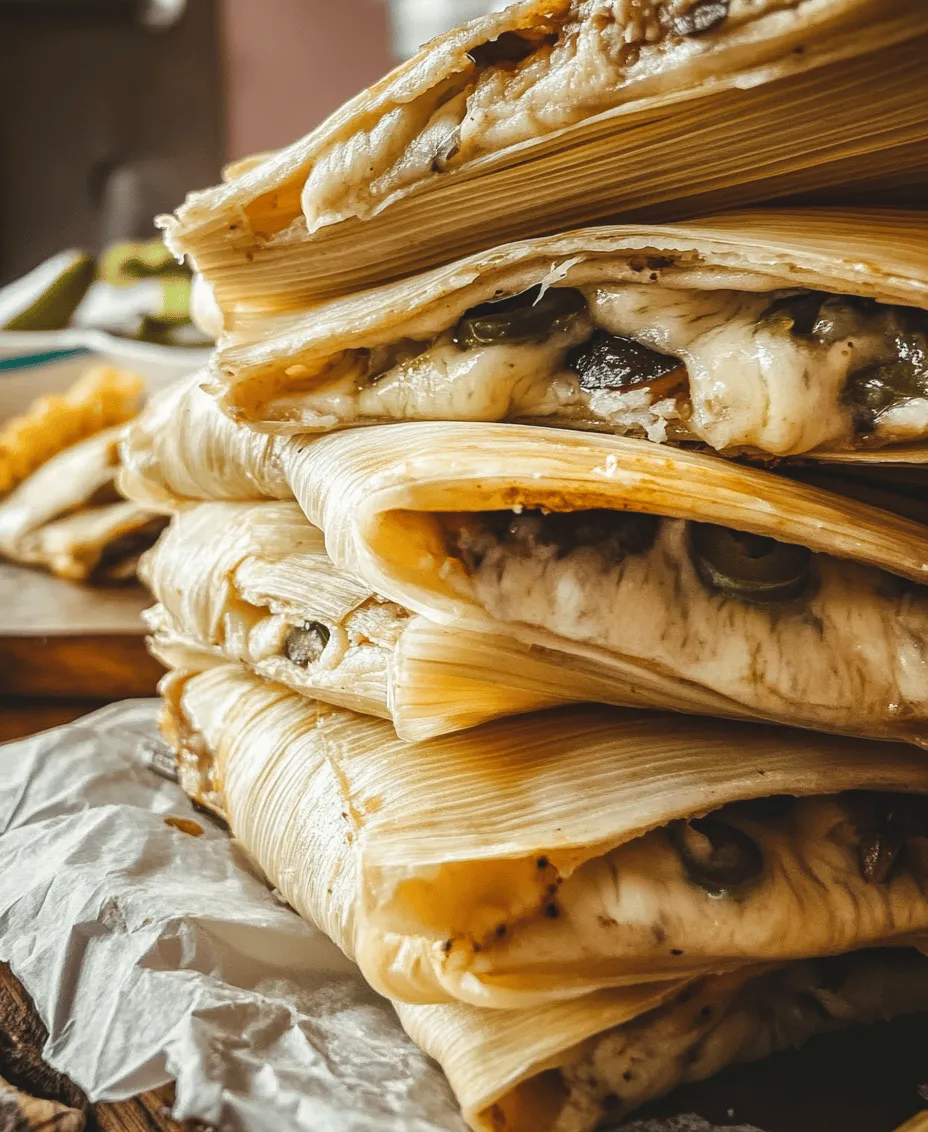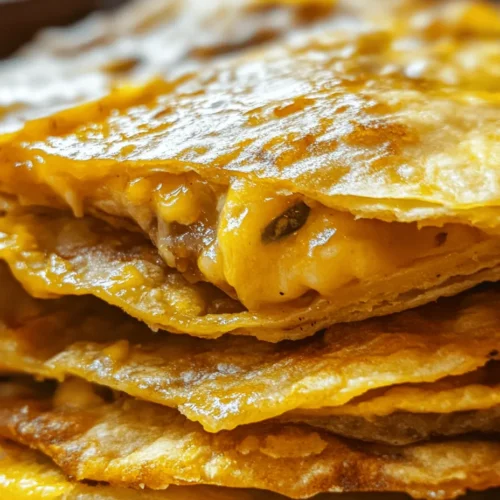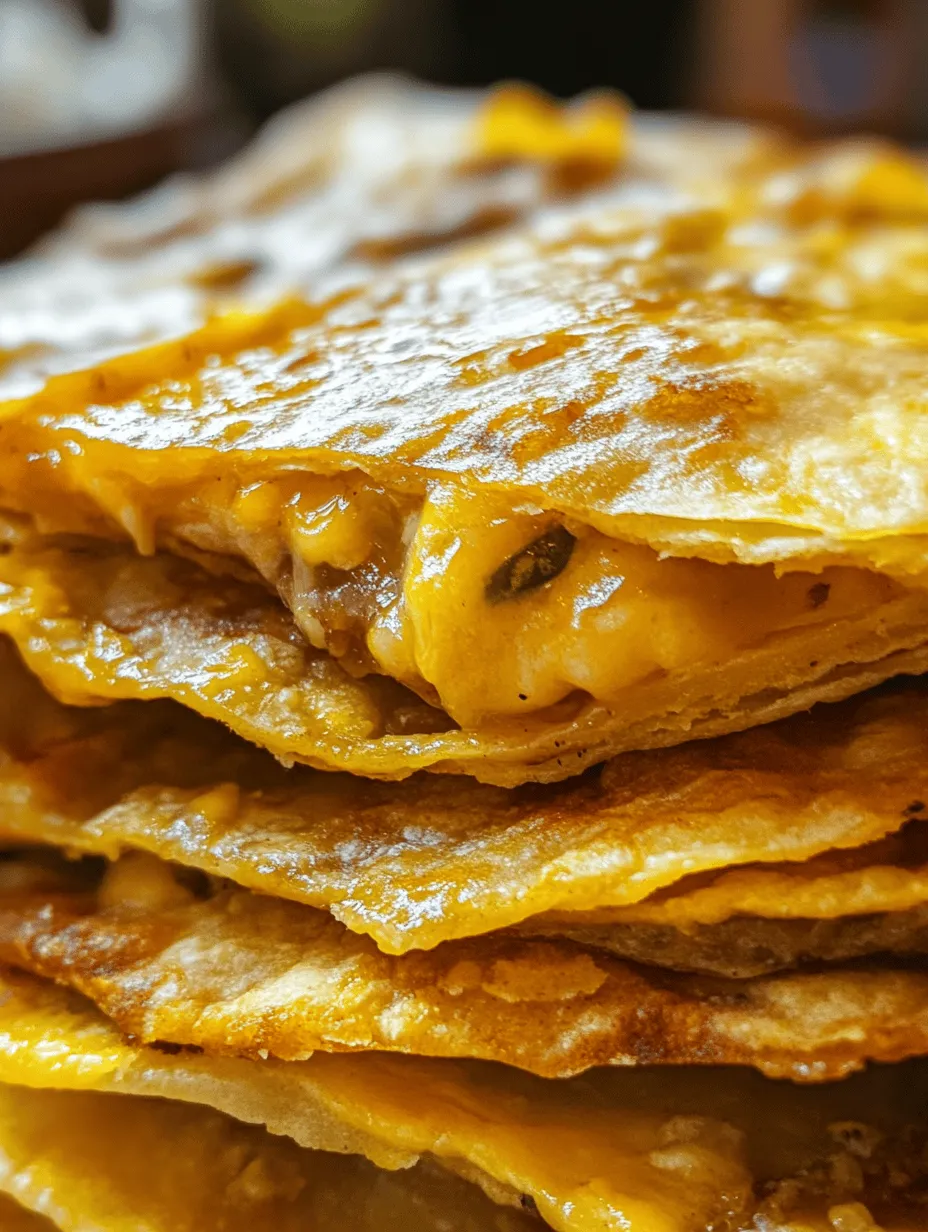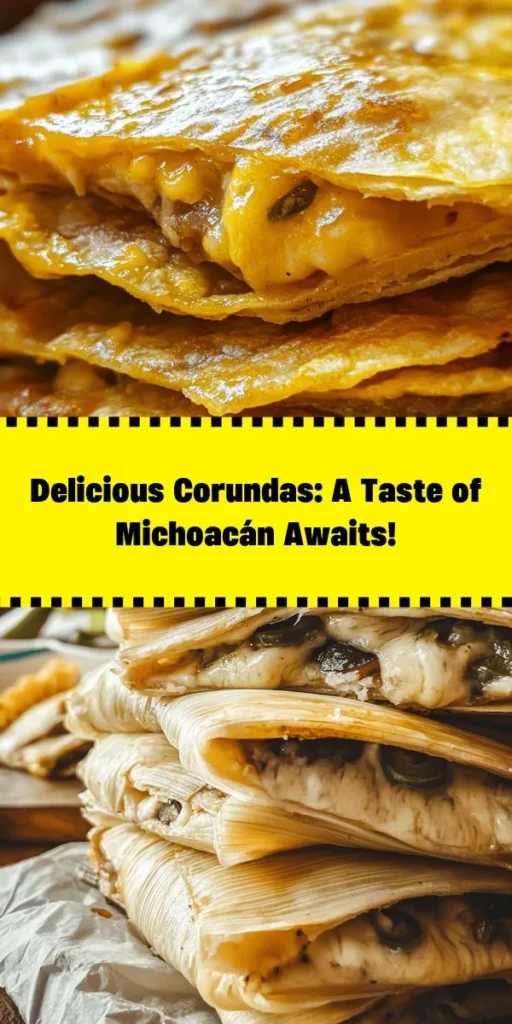Introduction
Michoacán, a picturesque state located in west-central Mexico, is not only known for its stunning landscapes and rich culture but also for its vibrant culinary traditions. The cuisine of Michoacán is a tapestry woven from the indigenous flavors and techniques that have been passed down through generations, representing the heart and soul of Mexican gastronomy. Among the many delightful dishes that hail from this region, corundas stand out as a traditional staple that embodies the spirit of community and celebration.
Corundas are a type of corn-based dish that shares similarities with other well-known Mexican foods, yet they possess distinct characteristics that make them unique. Their history is deeply rooted in the indigenous culture of Michoacán, where they have been enjoyed for centuries as a nutritious and versatile food. Traditionally shaped like triangular parcels and wrapped in corn husks, corundas are not just a meal; they are a symbol of the warmth and hospitality found in Michoacán. Whether served during family gatherings, festivals, or as an everyday dish, corundas evoke a sense of nostalgia and pride.
Making corundas at home is an enriching experience that allows anyone to connect with the authentic flavors of Michoacán. As you embark on this culinary journey, you will discover the joy of preparing traditional recipes that have stood the test of time. The process of crafting corundas from scratch not only highlights the importance of fresh ingredients but also fosters a sense of community as you share the delicious results with family and friends.
Understanding Corundas
Corundas are characterized by their unique triangular shape and soft, moist texture, which is achieved through the use of masa harina—a staple ingredient made from finely ground corn. Unlike tamales, which are typically steamed and filled with various ingredients, or gorditas, which are thick corn cakes often grilled or fried, corundas have a distinct preparation method that sets them apart.
The dough for corundas is mixed with liquid, usually broth, which lends additional flavor and moisture. This mixture is then shaped into triangles, wrapped in corn husks, and steamed until cooked through. The result is a delectable dish that boasts a subtle corn flavor complemented by the savory notes of the broth.
Culturally, corundas hold a special place within Michoacán. They are often prepared during significant events such as weddings, religious celebrations, and community gatherings, making them a cherished part of the region’s culinary heritage. The act of making corundas is often a communal affair, with family members coming together to prepare the dough, fill the corundas, and share stories, laughter, and traditions.
Ingredients for Corundas
Creating the perfect corundas begins with selecting high-quality ingredients that contribute to the dish’s rich flavor and texture. Below is a detailed breakdown of the essential components needed to make corundas, along with their roles in the recipe.
1. Masa Harina
Masa harina is the cornerstone of corundas and many other Mexican dishes. This finely ground corn flour is made from nixtamalized corn, which means the corn has been treated with an alkaline solution to enhance its flavor and nutritional value. In corundas, masa harina provides the necessary structure and texture, allowing the dish to hold its shape while remaining tender and flavorful.
2. Broth
The choice of broth is crucial in enhancing the overall taste of corundas. Chicken broth is a popular option, imparting a rich, savory flavor to the dough. However, for a vegetarian or vegan alternative, vegetable broth works wonderfully and adds depth without animal products. The broth not only adds flavor but also contributes moisture to the masa, ensuring a soft and pliable dough.
3. Baking Powder and Salt
Baking powder plays an essential role in the texture of corundas. It helps the dough rise slightly during steaming, resulting in a light and fluffy interior. Salt is equally important, as it amplifies the flavors of the other ingredients, creating a well-balanced final product.
4. Melted Butter or Vegetable Oil
Incorporating melted butter or vegetable oil into the masa enhances the flavor and contributes to the overall richness of the corundas. Butter adds a delightful creaminess, while vegetable oil provides a lighter option. Either choice will yield delicious results.
5. Corn Husks
Corn husks are integral in the preparation of corundas, serving as natural wrappers that keep the dough moist during steaming. When selecting corn husks, look for large, pliable pieces that are free from any tears or holes. Before using them, they should be soaked in warm water to ensure they are flexible and easy to work with.
6. Cheese
Traditionally, corundas can be filled with cheese, which melts beautifully during cooking and adds a creamy texture to each bite. Common cheese options include queso fresco or Oaxaca cheese, both of which have excellent melting properties and complement the flavors of the masa.
7. Optional Fillings
While corundas can be enjoyed plain or with cheese, they also offer a canvas for creativity. You can personalize your corundas by adding various fillings, such as sautéed vegetables, shredded chicken, or even spicy chiles for those who enjoy a bit of heat. These optional fillings allow you to tailor the dish to your taste preferences, making corundas a versatile choice for any meal.
Preparation Steps for Making Corundas
Now that you have a clear understanding of the ingredients involved in making corundas, let’s delve into the preparation process. Below are detailed, step-by-step instructions that emphasize techniques and tips to ensure your corundas turn out perfectly.
Step 1: Soak the Corn Husks
Start by soaking the corn husks in warm water for about 30 minutes. This will make them pliable and easier to wrap around the dough. Ensure that you have enough husks to accommodate the number of corundas you plan to make.
Step 2: Prepare the Dough
In a large mixing bowl, combine the masa harina, baking powder, and salt. Mix the dry ingredients thoroughly to ensure an even distribution of flavors. Next, gradually add the broth to the dry mixture, stirring continuously until a soft dough forms. The dough should be moist but not sticky; adjust the consistency by adding more broth or masa harina as needed.
Step 3: Incorporate Fat
Once the dough is well-mixed, pour in the melted butter or vegetable oil. Knead the dough for a few minutes until it becomes smooth and elastic. This step is crucial as it helps develop the texture of the corundas.
Step 4: Shape the Corundas
Take a soaked corn husk and lay it flat on a clean surface. Scoop a portion of the dough (about the size of a golf ball) and place it in the center of the husk. If you are using cheese or any other fillings, add a small amount in the center of the dough. Fold the sides of the corn husk over the dough, then fold the bottom up to create a sealed package. Repeat this process until all the dough is used.
Step 5: Steam the Corundas
Prepare a steamer pot by adding water to the bottom and bringing it to a boil. Arrange the wrapped corundas in the steamer, making sure they are upright and not overcrowded. Cover the pot with a lid and steam the corundas for approximately 45 minutes to 1 hour, or until they are firm and cooked through.
Step 6: Serve and Enjoy
Once the corundas are finished steaming, carefully remove them from the pot and let them cool slightly before unwrapping. Serve them warm, accompanied by your favorite salsas, crema, or additional cheese. The soft and flavorful corundas are sure to be a hit at your table, transporting you to the heart of Michoacán with every bite.
As you follow these steps, remember that the process of making corundas is as much about the experience as it is about the final dish. Embrace the tradition, gather your loved ones, and enjoy the journey of creating this authentic taste of Michoacán cuisine.

Soaking Corn Husks: Importance of Pliability and Timing
The first step in making corundas is soaking the corn husks, which is crucial for achieving pliability. Begin by selecting dried corn husks, which can often be found in Mexican grocery stores or online. Place the husks in a large bowl and cover them with hot water. Allow them to soak for about 30 minutes to 1 hour. This soaking period is vital as it softens the husks, making them easier to fold and secure around the masa.
Proper soaking not only enhances the texture of the husks but also prevents tearing during assembly. If you’re in a hurry, you might consider using boiling water for a quicker soak, but be cautious not to over-soak, as this can lead to overly soft husks that may tear easily. The goal is to achieve the right balance of softness and strength for wrapping your corundas.
Making the Masa: Techniques for Achieving the Right Consistency and Texture
Creating the masa is a fundamental step in corunda preparation. The key ingredient is masa harina, a finely ground corn flour that’s essential for authentic Mexican dishes. To start, combine 2 cups of masa harina with 1 ½ cups of warm water or broth in a large mixing bowl. Add a pinch of salt for flavor.
Mix the ingredients with your hands or a wooden spoon until a smooth dough forms. The texture should be soft but not sticky. If the masa feels too dry, add a little more water, a tablespoon at a time. Conversely, if it’s too wet, sprinkle in more masa harina until you achieve the right consistency.
For an added depth of flavor, consider incorporating a tablespoon of vegetable shortening or softened butter into the masa. This will help create a richer taste and a more tender texture. Once your masa is ready, it should be pliable enough to hold fillings without cracking.
Assembling Corundas: Folding Techniques for Secure and Aesthetically Pleasing Presentations
Now that you have your masa and soaked corn husks ready, it’s time to assemble the corundas. Take a soaked corn husk and lay it flat with the wide end facing you. Use a spatula or your hands to spread a portion of masa (about 2-3 tablespoons) onto the center of the husk, leaving about an inch of space at the top and sides.
Place your desired filling in the center of the masa. Popular fillings include shredded cheese, sautéed vegetables, or even meats. Once the filling is in place, fold the sides of the husk over the masa, then fold the bottom of the husk up to secure everything inside. The top can either be folded down or left open, depending on your aesthetic preference.
For a more refined presentation, tie the wrapped corundas with a thin strip of corn husk or kitchen twine. This not only adds a decorative touch but also helps keep the corundas intact during the steaming process.
Steaming Process: Importance of Steaming Time and Checking Doneness
The steaming process is crucial for cooking the corundas evenly and ensuring they are fully cooked. To steam, fill a large pot with water and place a steaming rack or basket inside, ensuring that the water does not touch the corundas. Arrange the assembled corundas upright in the pot, making sure they are not overcrowded. Cover the pot with a tight-fitting lid.
Steam the corundas for about 45 minutes to 1 hour. It’s important to check the water level occasionally, adding more water as necessary to prevent it from boiling dry. The corundas are done when the masa pulls away from the husk easily and has a firm texture. If you’re unsure about doneness, you can unwrap one corunda to check for consistency.
Serving Suggestions: Creative Ideas for Garnishing and Pairing with Salsas or Crema
Once your corundas are ready, it’s time to enjoy them! Serve them warm, garnished with a dollop of Mexican crema or sour cream and fresh salsa. A salsa verde made from tomatillos and jalapeños adds a tangy kick, while a roasted tomato salsa brings a smoky depth of flavor.
For a creative twist, consider topping your corundas with crumbled queso fresco and chopped cilantro, or even sliced avocado for a creamy element. Pairing corundas with a fresh salad or grilled vegetables can also enhance the meal and add a variety of textures.
Nutritional Information and Benefits of Corundas
A typical serving of corundas (one filled corunda) contains approximately 150-200 calories, depending on the fillings used. They provide a good source of carbohydrates from the masa harina, essential for energy. Each serving typically contains about 3-5 grams of protein, especially when filled with cheese or additional protein sources.
Masa harina is a great source of fiber, vitamins, and minerals, making corundas a nutritious option. Additionally, using fresh ingredients for fillings and toppings can further enhance their health benefits. For those with dietary preferences, corundas can easily be made vegetarian by opting for plant-based fillings. Gluten-free options are also achievable by using certified gluten-free masa harina.
Variations and Customizations of Corundas
Corundas are incredibly versatile, allowing for a variety of fillings and flavors to cater to different tastes. For a vegetarian option, consider filling them with sautéed mushrooms, spinach, and cheese. For spice lovers, add diced jalapeños or chipotle peppers to your filling. Gourmet variations can include ingredients like roasted peppers, caramelized onions, or even seafood.
Across Mexico, corundas have regional variations that reflect local customs. In some areas, they are made with different types of corn or served with unique salsas. For instance, corundas from Michoacán might be served with a spicy red salsa, while those from Guerrero could feature a sweeter filling of squash or beans.
Experimenting with different cheeses can also yield delightful results. From sharp cheddar to creamy Oaxaca cheese, the choice of cheese can significantly impact the flavor profile of your corundas.
The Experience of Cooking Corundas
Making corundas is not just about the food; it’s about the experience of cooking with loved ones. Many families in Mexico have their own cherished recipes passed down through generations. The act of preparing corundas can become a communal event, where family members gather to share stories and techniques in the kitchen.
This communal cooking also reflects the heart of Mexican culture, where food plays a vital role in bringing people together. Encourage family or friends to join you in the kitchen, allowing everyone to participate in the assembly of corundas. This not only makes the process more enjoyable but also creates lasting memories.
Conclusion
Making authentic corundas is a rewarding culinary adventure that connects you to the rich traditions of Michoacán cuisine. The joy of crafting these delicious corn dough parcels and the satisfaction of enjoying them with loved ones is immeasurable. As you explore the flavors and variations of corundas, you contribute to the preservation of a cherished culinary heritage.
Embrace the journey of preparing corundas, and don’t hesitate to experiment with different fillings and pairings. Whether you stick to traditional recipes or put your own spin on the dish, the essence of corundas lies in their ability to bring people together around the table. Enjoy this delightful dish, and explore the vibrant and diverse world of Michoacán cuisine!



